The Engaged Sustainability Consumer
The State of Sustainability
The urgency is growing.
Consumers are expecting more. Businesses are being challenged by cost. Governance and mandates are propelling action more quickly. Clients across categories are trying to understand how to integrate and ingrain sustainability insights into their practices.
Segmenting the Sustainability Consumer
STEP 1: Quantitative
Our initial sustainability segmentation* covered personal perceptions, issues, involvement and responsibility, well-being, brands, products, categories, purchasing and decision making. Twenty+ attitude attribute agreements were inputs into the segmentation. After K-Means analysis; 200 different starting values and application of 30 algorithms, we settled on four segments, with two of the four segments indexing higher on sustainability attitudes and behaviors.
Demographically, here are the two segments:

*N=1300 US Residents, Readable sample: Gen Z, Millennials, Gen X and Baby Boomers
Key Attitudes
We emphasized attitudes in our segmentation because they aren't as fluid as behaviors and are hard to change over time.

Defining the Engaged Consumer
Psychologically, engagement occurs when we are "all-in" or so involved in what we are doing that we have a hard time stopping. This is the same with a sustainable lifestyle. Compared to the general population, this audience is more likely to:

Enablers and Barriers
Many factors influence sustainable behaviors, and our research left us with additional questions. More than 50% of those surveyed cited cost, lack of options, convenience, knowledge and awareness as barriers. Each of those factors leaves room for interpretation.
Factors that Influence Sustainable Behaviors
STEP 2: Qualitative Online Forums
There is nothing more powerful that the voice of the consumer. Using our typing tool for Segments 2 & 3, we asked 34 consumers to spend five days completing several exercises and tasks to help us understand the factors influencing their sustainable lifestyle.
A Day in the Life of the Sustainable Consumer
Through continued efforts, the sustainable consumer minimizes waste and makes consistent and conscious eco-friendly choices.

A Desire for Well-Being Motivates Choices

Individual Efforts ("Me") — Doing what I can to make small differences
Togetherness ("We") — Acceptance of others, working together for the greater good
Education — Important, especially among youth
Inspire the Future — Encourage long-term changes early on
Positive Outlook — Optimistic towards the future if we do our part
Cultural & Family Values Influence Sustainable Choices
Unlike GenPop, engaged sustainability consumers don't cite knowledge and awareness as barriers to their lifestyle. They are knowledgeable about the issues; in fact, 82% state they are the person in their group who encourages action on sustainability. What distinguishes this group is the influence of culture and family values and their enabling role.

We did hear about their main barriers:
Availability (or lack thereof) is a major hurdle, but this is even more true in lower socioeconomic areas. We see this most in daily shopping routine—the engaged consumer looks for "clean" groceries, cleaning supplies and personal care items, but many have trouble accessing them.
Convenience: Sustainability requires more effort in several different ways. Is is an effort to find, use or maintain. This includes chores and tasks like remembering to bring reusable bags and gaining access to convenient recycling programs or facilities.
Cost: The reality is that sustainable products and services are often more expensive than their non-sustainable counterparts. Engaged consumers run "is sustainability worth it" calculations in their heads.
So What?
How would we summarize the engaged consumer? Acting in a manner today to conserve resources for tomorrow is a lifestyle for the engaged consumer. They believe that we can have a better future if we all take responsibility. The engaged have simplified sustainability into a lifestyle that is:
• Ritualized: Regular, daily behaviors that are ingrained routines. Care taking. Preserving. People are drawn back to a ritual.
• Personalized: Though many of the activities and attitudes are uniform, each person prioritizes their choices differently.
• Future-focused: Sustainability is about making choices today to ensure there are resources for future generations.











